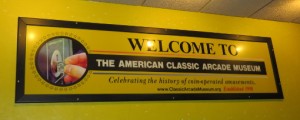 So have you heard the urban legend about when Atari buried about a million copies of the E. T.: The Extra Terrestrial in a hole in the desert? The rumor is that Atari whipped out the E. T. video game in about six weeks to make the almighty Christmas dollar, and when the game turned out to be a giant, buggy, stinking pile of shit (that part’s not a rumor; I borrowed the game from a buddy back in sixth grade for a weekend, and have never been so happy that I didn’t spend my own allowance on something) that no one wanted to buy, Atari’s management sent truckloads of of the game to the middle of the desert, under cover of darkness, to drop in a dark hole to take as some kind of filthy tax write-off.
So have you heard the urban legend about when Atari buried about a million copies of the E. T.: The Extra Terrestrial in a hole in the desert? The rumor is that Atari whipped out the E. T. video game in about six weeks to make the almighty Christmas dollar, and when the game turned out to be a giant, buggy, stinking pile of shit (that part’s not a rumor; I borrowed the game from a buddy back in sixth grade for a weekend, and have never been so happy that I didn’t spend my own allowance on something) that no one wanted to buy, Atari’s management sent truckloads of of the game to the middle of the desert, under cover of darkness, to drop in a dark hole to take as some kind of filthy tax write-off.
It’s an event that, while a lot of people thought it was apocryphal, is widely considered to be the beginning of the end of the original era of classic video games. Within a couple of years, the Atari 2600 and 5200 had gone down (along with ColecoVision, which was the biggest and most advanced competitor for the home video game throne until people just stopped giving a shit) and video arcades began a long, slow decline to take a place in Americana with the drive-in movie theater: an institution that once was everywhere, but that now you need to really hunt for.
And it all started with an alleged hole in the desert, dug by a company that did something that the full weight and power of the United States Government was unable to do: kill E. T.
Or at least it was an alleged hole. This weekend, a group of documentary filmmakers successfully found that hole in an Alamogordo, NM landfill and unearthed a bunch of copies of the E. T. cartridge, thereby bringing to light the end of the first golden age of video games.
And it is purely by coincidence that the bulk of the Crisis On Infinite Midlives staff made our semi-annual visit to the American Classic Arcade Museum at the Funspot Arcade in Laconia, NH, to get back a taste of the meaty days of that first golden age.
 Podcast RSS Feed
Podcast RSS Feed iTunes
iTunes Google Play
Google Play Stitcher
Stitcher TuneIn Radio
TuneIn Radio Android
Android Miro Media Player
Miro Media Player Comics Podcast Network
Comics Podcast Network